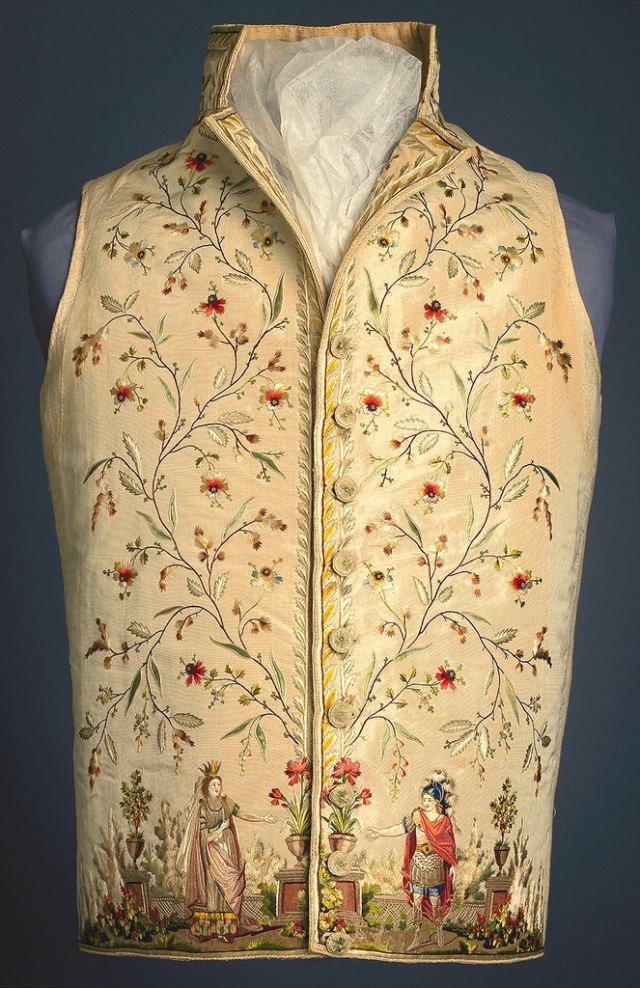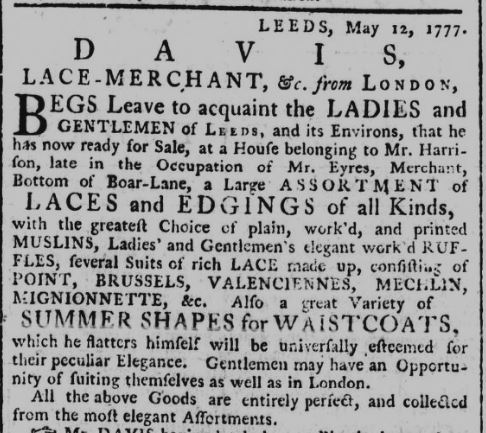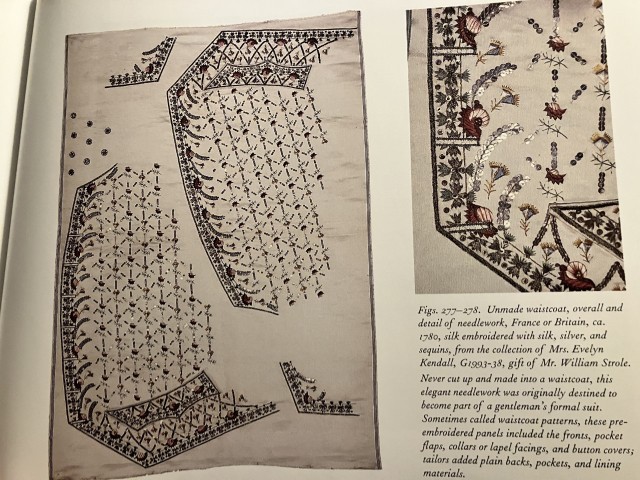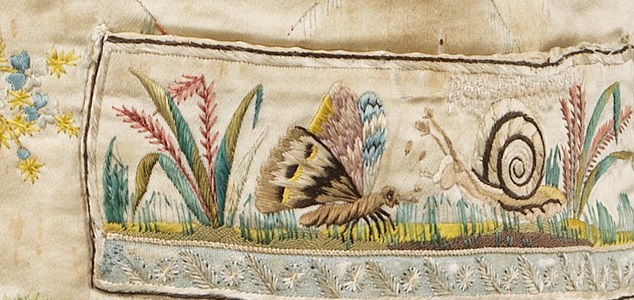In the 18th and early 19th century it was very much the fashion for men to wear some stunning waistcoats, so today we’re going to take a pictorial look at some stunning waistcoats from a variety of museums and galleries. Why don’t we see anything quite like these today? Perhaps time for a revival, maybe!

The first items is truly stunning especially when you look at the detail of the bottom of it. I can’t imagine how long that must have taken to sew.
I thought it was worth also taking a look at newspaper adverts to see who was actually selling waistcoats and how much they cost. Whilst there are plenty of adverts, none of them tell us how much such lovely items would have cost.





The design of this piece was created by Anna Maria Garthwaite, known for creating vivid floral designs for silk fabrics hand-woven in Spitalfields, London, in the mid-18th century.
Peter Lekeux was one of the many weavers working in Spitalfields, London, who died in 1768. In his will he left bequests to his wife, Mary, his mother, Sarah and his sister, Mary Margaret.
To finish, look closely at the pockets on this one, such intricate detail

Following on from a conversation with Jennifer Newbold, please see below a fine example of a waistcoat pattern.



